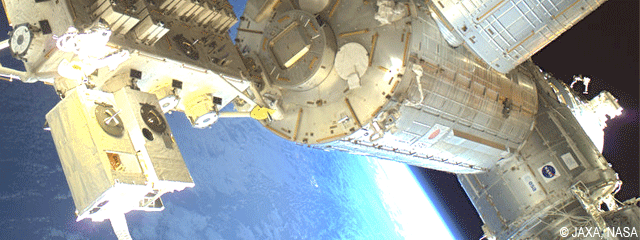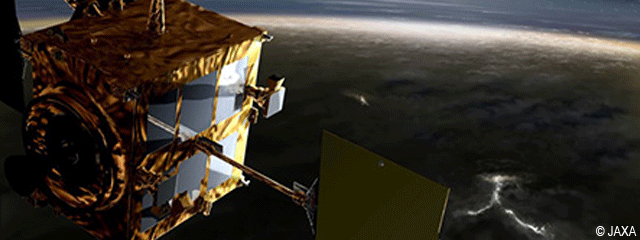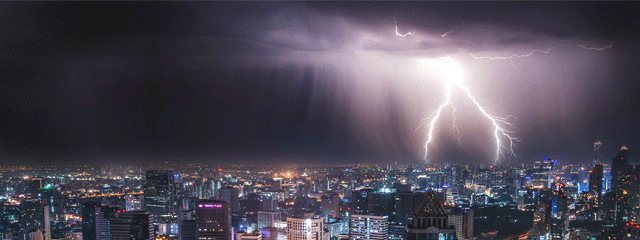"Does lightning create antimatter cloud!? - Identification of the lightning-accosiated nuclear reaction in thunderclouds from the positron and neutron observations" (2017-11-23)
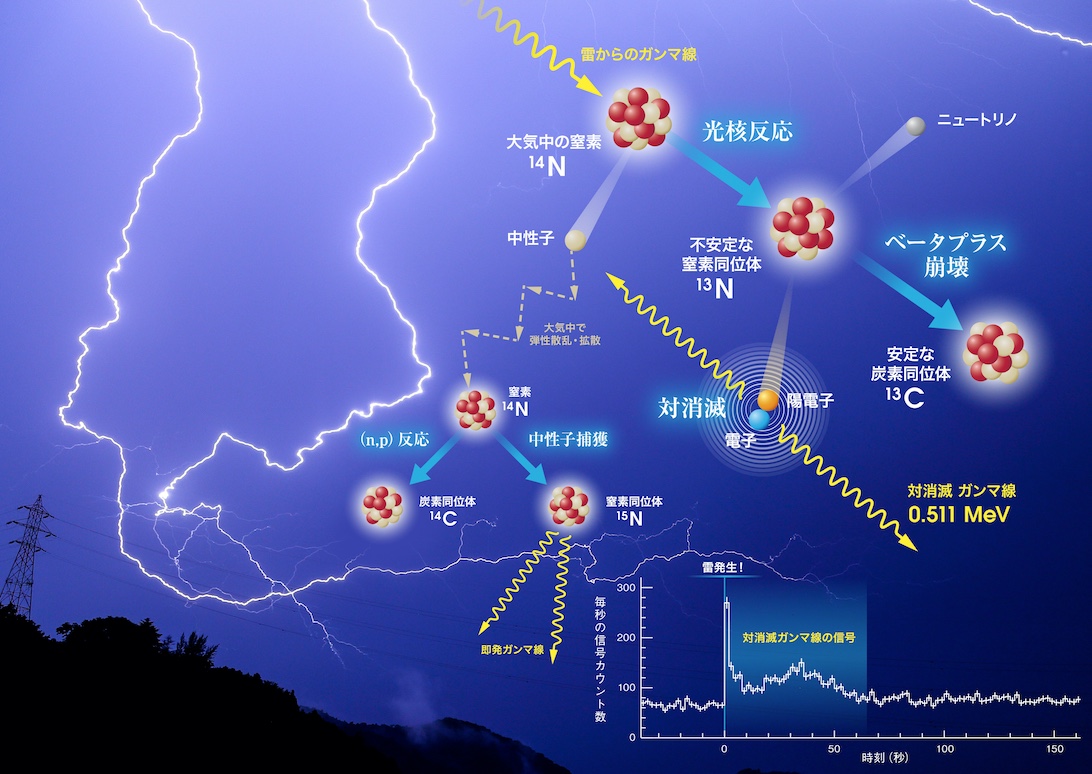 The research group led by Dr. T. Enoto(Kyoto Univ.) and other colleagues in Hokkaido Univ., Univ. of Tokyo, RIKEN, Japan Atomic Energy Agency, Nagoya Univ., etc., discovered that lighting discharges can create the nuclear reaction (photonuclear reaction) in the atmosphere. In Feb. 6, 2017, the ground-based energetic particle detectors installed at Kashiwazaki city in Niigata detected the intense gamma-ray burst generated by lightning discharges. About 35 seconds later from the gamma-ray detection, the gamma-ray afterglow which was generated by the electron–positron annihilation and had 0.511 MeV energy was also first detected when the thundercloud producing the lightning discharges passed over the observation site. This 0.511 MeV gamma-ray is considered to be originated in the positrons generated by the unstable radioisotope of nitrogen nuclei (N13), which is created by the photonuclear reaction between lightning-producing gamma-rays and the stable nitrogen nuclei (N14). Though this reaction was theoretically predicted, it is first time that this reaction is observationally detected. This result was published in Nature on Nov. 23, 2017.
The research group led by Dr. T. Enoto(Kyoto Univ.) and other colleagues in Hokkaido Univ., Univ. of Tokyo, RIKEN, Japan Atomic Energy Agency, Nagoya Univ., etc., discovered that lighting discharges can create the nuclear reaction (photonuclear reaction) in the atmosphere. In Feb. 6, 2017, the ground-based energetic particle detectors installed at Kashiwazaki city in Niigata detected the intense gamma-ray burst generated by lightning discharges. About 35 seconds later from the gamma-ray detection, the gamma-ray afterglow which was generated by the electron–positron annihilation and had 0.511 MeV energy was also first detected when the thundercloud producing the lightning discharges passed over the observation site. This 0.511 MeV gamma-ray is considered to be originated in the positrons generated by the unstable radioisotope of nitrogen nuclei (N13), which is created by the photonuclear reaction between lightning-producing gamma-rays and the stable nitrogen nuclei (N14). Though this reaction was theoretically predicted, it is first time that this reaction is observationally detected. This result was published in Nature on Nov. 23, 2017.
More details about the paper: click here
"The generation mechanism of the gigantic bow-shaped cloud structure in the Venus atmosphere is identified." (2017-01-17)
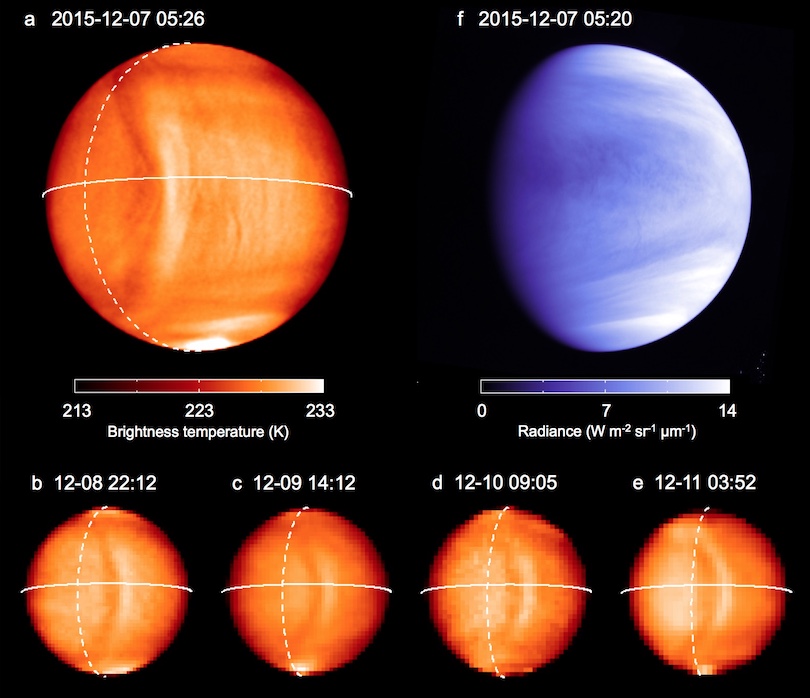 The research group led by Dr. M. Tagushi(Rikkyo Univ.) and other colleagues in Hokkaido Univ., JAXA, etc., discovered the gigantic bow-shaped cloud structure in the Venus atmosphere, which had 10,000 km length in the north-south direction, in Dec. 2015 using the long-wave infrared camera (LIR) onboard the Akatsuki orbiter. This cloud structure remained in the same location without being affected by the strong eastward wind (super rotation). From the analysis of the numerical simulation, it is found that this cloud structure was created by the atmospheric waves propagating from the lower atmosphere to the upper cloud layer at 65 km and propagating in the north-south direction. This result implies that the cloud-top observation can provide the information of the Venusian lower atmosphere. This result was published in Nature Geoscience in Jan. 17, 2017.
The research group led by Dr. M. Tagushi(Rikkyo Univ.) and other colleagues in Hokkaido Univ., JAXA, etc., discovered the gigantic bow-shaped cloud structure in the Venus atmosphere, which had 10,000 km length in the north-south direction, in Dec. 2015 using the long-wave infrared camera (LIR) onboard the Akatsuki orbiter. This cloud structure remained in the same location without being affected by the strong eastward wind (super rotation). From the analysis of the numerical simulation, it is found that this cloud structure was created by the atmospheric waves propagating from the lower atmosphere to the upper cloud layer at 65 km and propagating in the north-south direction. This result implies that the cloud-top observation can provide the information of the Venusian lower atmosphere. This result was published in Nature Geoscience in Jan. 17, 2017.
More details about the paper: click here。
